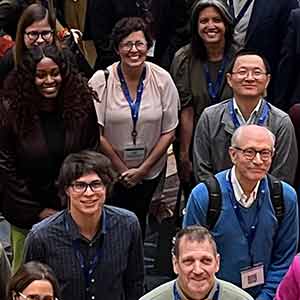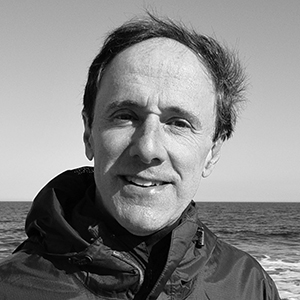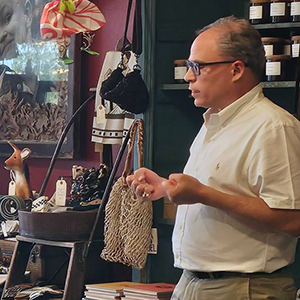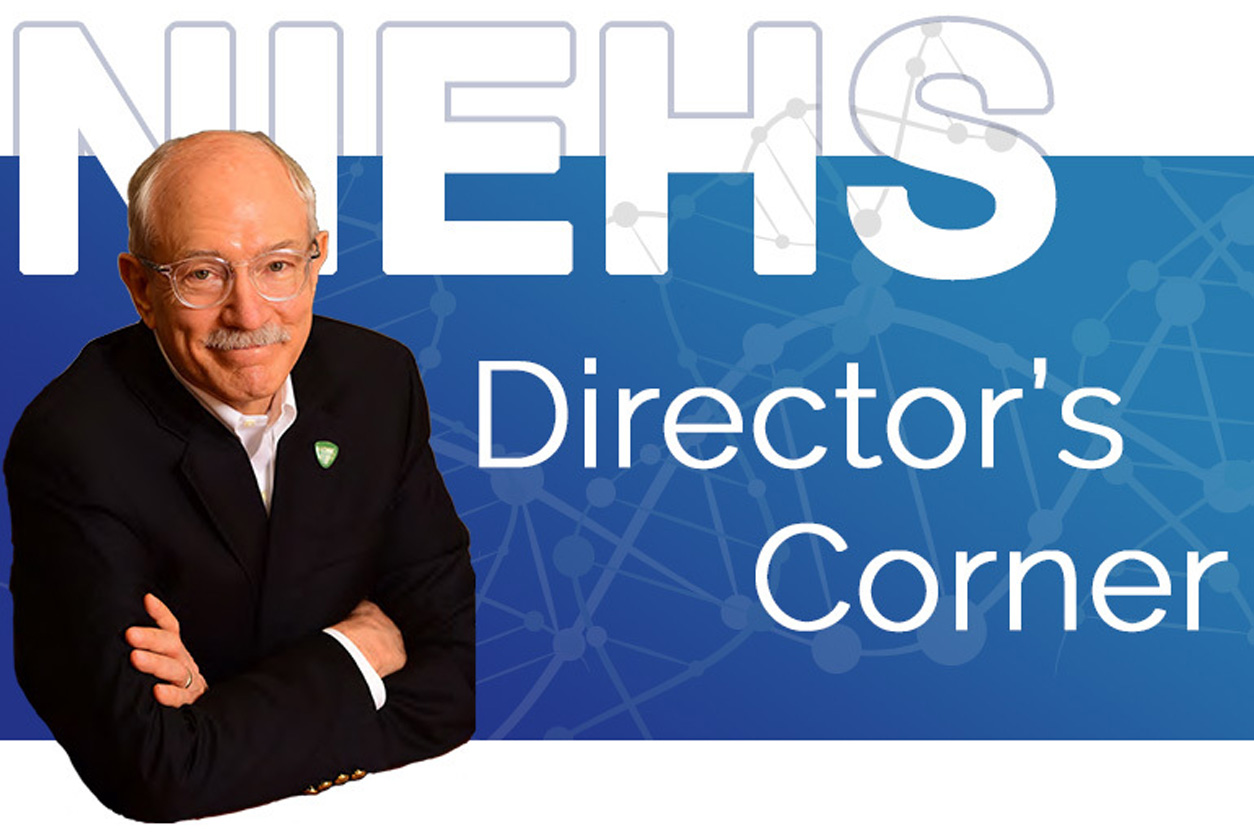 Rick Woychik, Ph.D., directs NIEHS and the National Toxicology Program. (Image courtesy of NIEHS)
Rick Woychik, Ph.D., directs NIEHS and the National Toxicology Program. (Image courtesy of NIEHS)One of my leadership goals is to empower NIEHS-supported researchers to share their knowledge and diverse perspectives. For if we are to promote healthier lives and help to prevent diseases through our work, we must strengthen dialogue not just among ourselves but also with the public, community stakeholders, and policymakers.
At NIEHS, scientific outreach and community engagement are embedded in theme 2 of our strategic plan because we recognize that research alone does not solve important environmental public health problems or reduce related health disparities. In addition, we recognize that two-way communication that taps into community knowledge at all stages of research can improve the quality of our science and increase opportunities for discovery. By building a foundation of trusted, rigorous research, we are well positioned to exchange knowledge with individuals so that they can take steps to protect their health.
“Report back” of research results to study participants — the topic of this month’s column — is a great example of how we can turn our science into action that measurably improves lives.
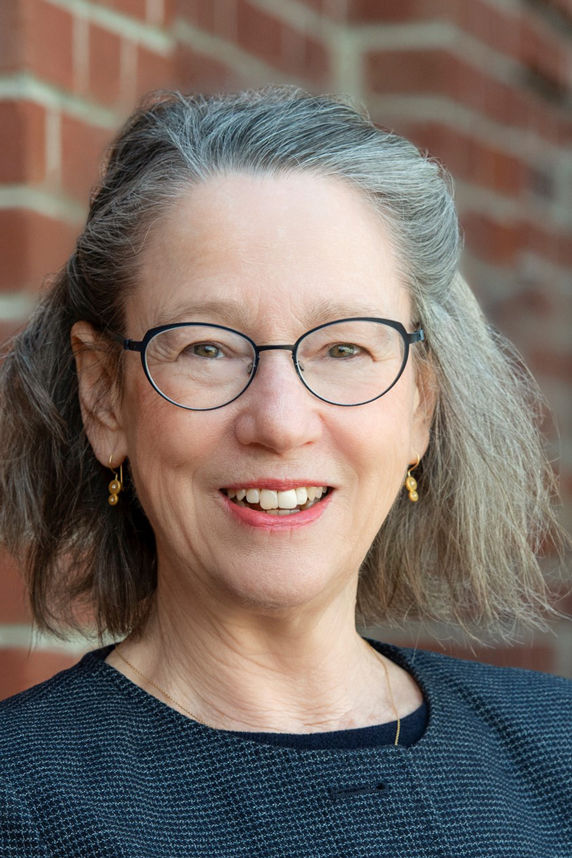 Learn more about Brody’s report back efforts by reading this 2019 article in the NIEHS “Stories of Success” series. (Photo courtesy of Silent Spring Institute)
Learn more about Brody’s report back efforts by reading this 2019 article in the NIEHS “Stories of Success” series. (Photo courtesy of Silent Spring Institute)Recently, I spoke with two thought leaders who have long promoted report back — NIEHS grantees Julia Brody, Ph.D., from Silent Spring Institute, and Katrina Korfmacher, Ph.D., from the University of Rochester Medical Center. At recent meetings of the National Advisory Environmental Health Sciences Council, they described how report back can increase trust among study participants, boost environmental health literacy, improve study designs, and empower communities to reduce health disparities. Brody and Korfmacher spurred conversation about how NIEHS can take a leadership role in helping scientists disseminate their findings.
Both researchers worked with Liam O’Fallon, who coordinates the NIEHS Partnerships for Environmental Public Health Program, to develop a proposed action plan focused on guidelines, training materials, and other tools that will increase adoption of report back across the environmental health sciences. In fact, they have been given the go-ahead to move forward with this plan to advance return of research results. I look forward to seeing what detailed recommendations they offer and what a pilot project will look like, and I will share that information with Director’s Corner readers once it becomes available. In the meantime, I hope you enjoy my conversation with Brody and Korfmacher, excerpted below.
Why report back matters
Rick Woychik: Can you explain the concept of report back and discuss why you think it is important in the environmental health sciences?
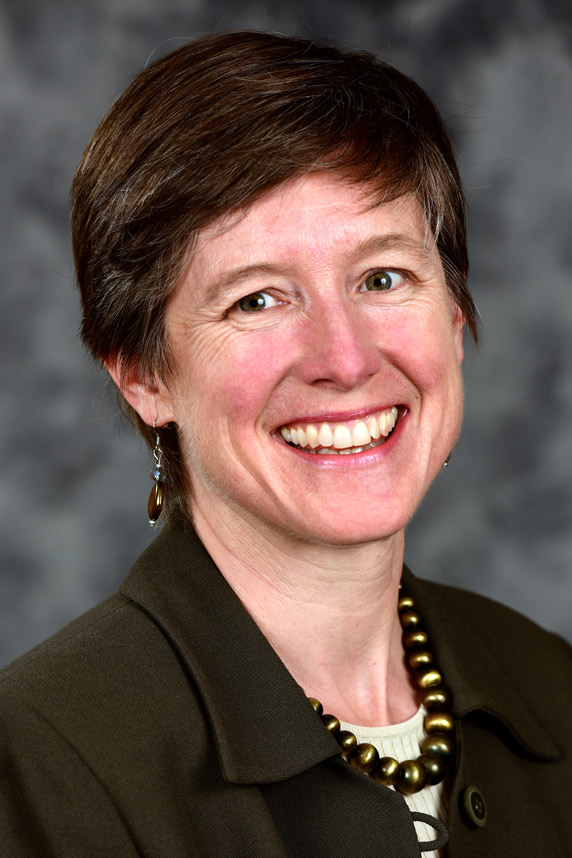 Korfmacher aims to translate environmental health sciences research into policy at the local, state, and federal levels. (Photo courtesy of Steve McCaw / NIEHS)
Korfmacher aims to translate environmental health sciences research into policy at the local, state, and federal levels. (Photo courtesy of Steve McCaw / NIEHS)Julia Brody: In a study that measures people’s exposures to chemicals, whether in blood, urine, house dust, or other samples, report back means sharing what you find and providing those results in the context of the research as a whole and the wider scientific knowledge. This approach informs participants about the chemicals themselves — including what we know and do not know about where they come from, and what the health effects might be — and how people can reduce exposures if they choose to do so.
Katrina Korfmacher: Report back also makes for better research. We have found that people are more likely to participate, more likely to follow up, and more likely to stay in studies when they know that they will receive beneficial information in return. This kind of two-way engagement with participants creates an environment in which scientists can identify novel research questions as well as potential interventions and solutions. It’s a win-win for everyone.
Addressing needs of study participants
RW: I completely agree, and I would add that report back is a great way to advance environmental justice. It can help underserved populations and communities disproportionately exposed to pollution — due to proximity to industrial facilities or highways, for example — identify exposures and bring emerging science to their communities and decision makers.
JB: Yes, absolutely. Report back comes from a desire to respect participants and from a framework that sees them as partners in the research enterprise. Knowledge is power, and sharing it can advance health equity and remedy disparities. It can help communities take the next steps to develop and disseminate interventions that work.
KK: I think that ethically, as Julia said, report back is the right thing to do in terms of respecting people who are giving their time, providing their biological and environmental samples, and sharing their local knowledge and perspectives to advance research. Scientists should ask fundamental questions: What is the significance of my research? What beyond publishing can I do to address potential needs of participants as efficiently and equitably as possible?
Knowledge is power
RW: Can you describe one or two examples of successful implementation of report back?
JB: We have found that report back focuses researchers’ minds on outliers and results that might be unusual, whereas their standard analysis looks more for a central tendency and data that are typical across a group of study participants. When you are reporting back, your mind is focused on results that might be different, and that can lead to important discoveries.
One example involves Silent Spring’s Household Exposure Study, which sought to identify environmental factors affecting high rates of breast cancer observed on Cape Cod, Massachusetts. We discovered that a floor finish used in the 1950s was resulting in very high exposure to PCBs [polychlorinated biphenyls] in some of the homes, which we learned through conversation with participants as we returned their results.
Later, we expanded that study to a community in northern California that is next to a major oil refinery. Residents had questions about a pending proposal to expand the refinery, and we were able to document chemicals associated with the refinery that were inside people’s homes. One of the participants who received her results said, “If you don’t know the information, you have an excuse for not being active. But if you know the information, you can’t not participate in trying to make change.”
She and other residents became engaged, took their personal results to public hearings, and ultimately won a court decision limiting the expansion of the refinery. So, that was a clear example of where report back empowered people to take action to protect their families’ health.
KK: There are so many examples where people receive information about how the environment may be affecting their bodies that causes them to adjust personal behaviors, perhaps changing consumer products or cleaning practices, and that is incredibly empowering. But the cases that really inspire me are the ones like Julia just shared, where people have become engaged in creating solutions that we did not know existed before.
My experience investigating childhood lead exposure in Rochester, New York, is a good example. We tested people’s houses and told parents about the connection between lead and house dust and exposure measurements in children’s blood. Some changed cleaning behaviors, and several even moved. We also told landlords, and a few of them made repairs to remove lead.
However, those limited individual changes were insufficient. We knew that much more needed to be done to reduce exposures for all children, and it became clear that a policy change was required. Eventually, the city council passed measures requiring proactive housing inspections and correction of lead hazards, and exposure levels went down dramatically. But a key part of what got those policy changes off the ground was report back, where families learned about their exposures. Their personal stories influenced decision-makers.
Vision for the future
RW: What is your vision for report back? What would you like to see in the coming years?
JB: A major priority for me is to make it easier for researchers to implement report back. In five years, I would like to see report back viewed as routine and something that is an ordinary responsibility of conducting research.
I also want to promote innovation in this area. With NIEHS support, over the past several years, my team has developed a tool called DERBI, which stands for Digital Exposure Report-Back Interface. That is a software framework that makes it practical to report back in studies of any size. The tool provides contextual information about sources of chemicals and how to reduce exposures, along with results in the context of others in the study as well as national data.
Finally, I think that report back can be an important part of precision environmental health, especially when it comes to studies involving biomonitoring and chemical exposure assessments in personal spaces. I think there is a great opportunity for that kind of research — and insight from study participants — to be integrated in clinical settings. That may open new opportunities for the development of interventions and health solutions.
KK: Yes, I could not agree more. I think that bridging the silos of environmental assessment and health care is critical. To Julia’s point about increasing uptake of report back, I think that more resources will prove to be important, whether that means new funding structures or technology such as DERBI. The more that we can help researchers climb the report back learning curve, the more implementation we will see.
Also, I am excited about the guidelines and resources that Julia, Liam, and I are promoting, and I think it is very reaffirming that our efforts have received encouragement from the NIH [National Institutes of Health] Office of Science Policy. I think that is an indication that NIEHS and the broader environmental health sciences community are viewed as leaders in this area, and I am happy to be part of this exciting effort.
(Rick Woychik, Ph.D., directs NIEHS and the National Toxicology Program.)






